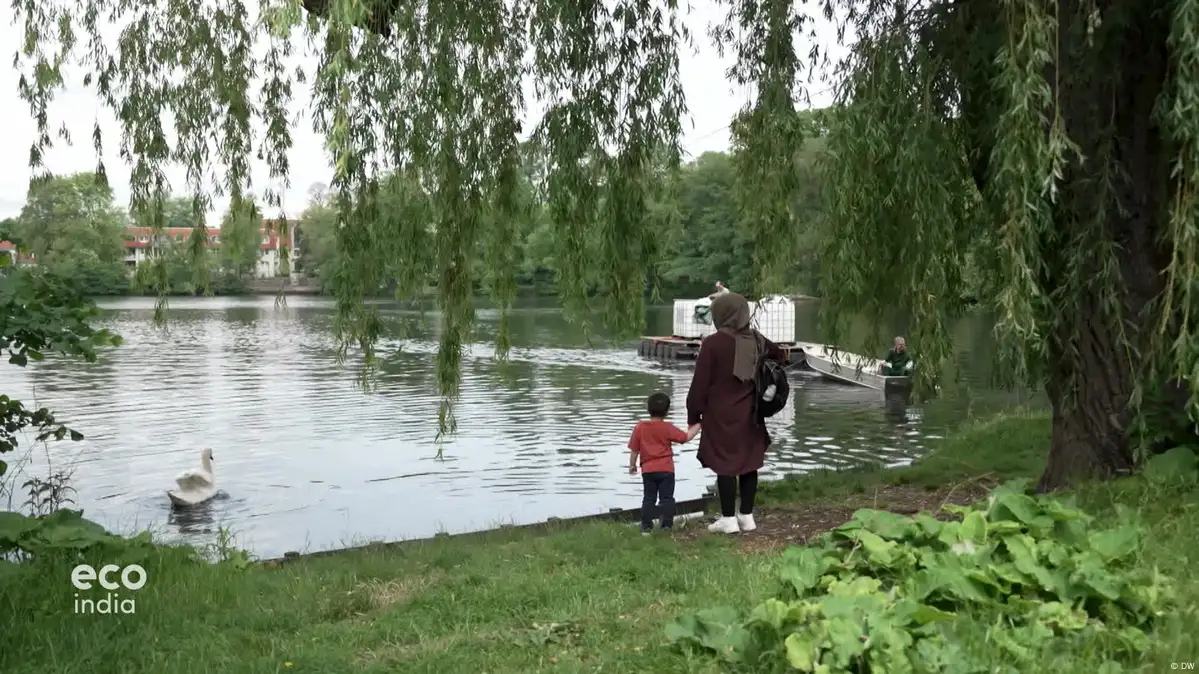Engineers Hartmut Wassmann and Roman Klemz have spent over a decade restoring water quality in what was once a severely polluted urban lake, the Berlin Schäfersee. Their small engineering firm developed a treatment method to combat foul odors and oxygen depletion caused by decaying organic matter. For over a decade, their small company has treated the lake using oxygen pumps and calcium nitrate. Their method not only neutralizes odors but also unexpectedly reduces phosphorus levels, which helps prevent harmful algae blooms.
To better understand this effect, they partnered with geochemist Thomas Neumann from the Technical University of Berlin. His research confirmed that calcium nitrate binds phosphorus in the sediment, locking it away for years and improving the lake’s ecological balance. However, the root problem remains untreated: polluted rainwater runoff. In densely built cities like Berlin, space constraints make it difficult to install treatment plants. One exception is Halensee in the west of the city, where runoff from a nearby highway is filtered through a treatment facility and reed beds, significantly improving water quality.
Despite the challenges, the Schäfersee method has become a model for treating small, shallow urban lakes. Karsten Rinke from the Helmholtz Centre for Environmental Research likens the approach to medical care — diagnosing each lake's unique issues before applying tailored treatments. With growing interest from other cities and countries, Wassmann and Klemz continue to expand their work. Thanks to their efforts, Schäfersee has transformed from a smelly, oxygen-deprived body of water into a clean, enjoyable urban lake.
